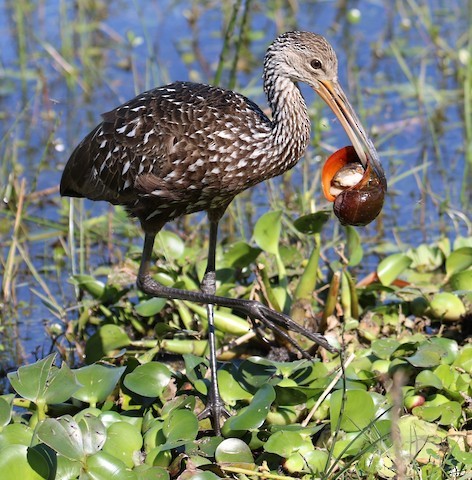Aramidae: Limpkins

“Speckled Limpkin” holding a Pomacea snail. © Barbara Strobino
Limpkins are a small family of large, long-legged, long-necked wading birds that visually resemble ibises, but are more closely related to cranes. They are widespread in wetlands from the southeastern U.S. to Argentina, a distribution that is generally associated with large aquatic Pomacea snails.
Since 1934, the Aramidae has generally been regarded as a single-species family, although two species were previously recognized and it appears somewhat likely that the original classification may eventually be restored. The “Speckled Limpkin” (Aramus guarauna pictus) of North and Middle America is heavily streaked over much of its plumage, whereas the “Brown-backed Limpkin” (A. g. guarauna) of South America is mostly unstreaked. Both forms have wide vocal repertoires that include loud, far-carrying “carr-rr-rao” calls, but there appear to be consistent differences that may prove to be significant.
During the 2000s, both forms of Limpkin have been increasing in numbers and expanding their ranges substantially. They have been approaching one another in western and central Panama, so it appears likely that they will meet, which in turn may help clarify their status as either separate species or superficially distinct forms of one species.
References
Boyd, J.H., 2019. Taxonomy in Flux: Gruae I: Opisthocomiformes & Gruiformes. http://jboyd.net/Taxo/List7.html. (Posted August 28, 2021. Accessed December 22, 2022.)
Roberson, D. 2000. Bird Families of the World: Limpkin, Aramidae. http://creagrus.home.montereybay.com/limpkin.html. (Posted April 23, 2000. Accessed December 22, 2022.)
Text © Russell Fraker / December 22, 2022